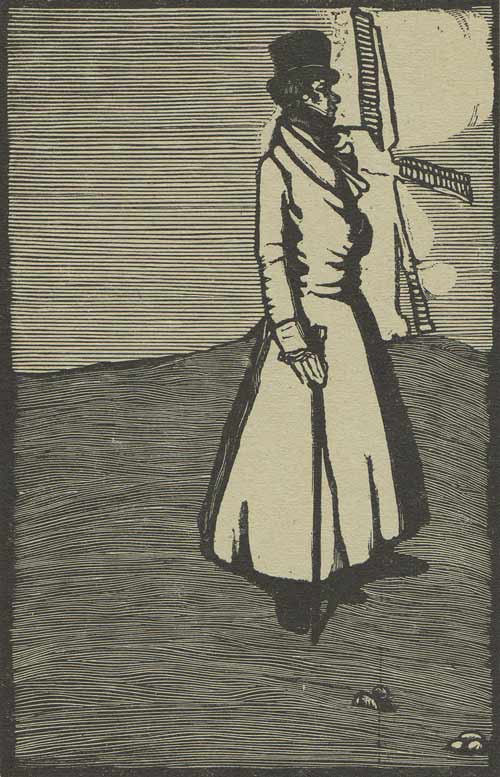| HOME | PAINTINGS | ABOUT | RESUME | GALLERIES | CONTACT | MORE |
Gordon Craig
(1872-1966) Gordon Craig, was an English modernist theatre practitioner; he worked as an actor, director and scenic designer, as well as developing an influential body of theoretical writings. Craig was the son of actress Dame Ellen Terry. Craig's idea of using neutral, mobile, non-representational screens as a staging device is probably his most famous scenographic concept. In 1910 Craig filed a patent which described in considerable technical detail a system of hinged and fixed flats that could be quickly arranged to cater for both internal and external scenes. He presented a set to William Butler Yeats for use at the Abbey Theatre in Ireland, who shared his symbolist aesthetic. Craig’s second innovation was in stage lighting. Doing away with traditional footlights, Craig lit the stage from above, placing lights in the ceiling of the theatre. Colour and light also became central to Craig’s stage conceptualizations.
The third remarkable aspect of Craig’s experiments in theatrical form were his attempts to integrate design elements with his work with actors. His mise en scène sought to articulate the relationships in space between movement, sound, line, and colour. Craig promoted a theatre focused on the craft of the director – a theatre where action, words, colour and rhythm combine in dynamic dramatic form. All of his life, Craig sought to capture "pure emotion" or "arrested development" in the plays on which he worked. Even during the years when he was not producing plays, Craig continued to make models, to conceive stage designs and to work on directorial plans that were never to reach performance. He believed that a director should approach a play with no preconceptions and he embraced this in his fading up from the minimum or blank canvas approach. As an engraver and a classical artist, Craig found inspiration in puppets and masks. In his 1910 article "A Note on Masks," Craig expounds the virtue of using masks as a mechanism for capturing the audience’s attention, imagination and soul. "There is only one actor – nay one man who has the soul of the dramatic poet, and who has ever served as the true and loyal interpreter of the poet," he proclaimed, and "this is the marionette.”
|

|